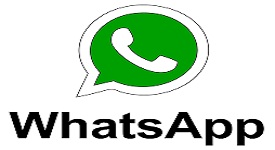LIS Links
First and Largest Academic Social Network of LIS Professionals in India
LIS Links Becoming More Social
Birthdays
Birthdays Today
Latest Activity
3rd One Week National Workshop on Open-Source Software: Koha and DSpace at Aligarh Muslim University
RTLA 11th Conference on Knowledge Commons Libraries as Catalysts for Viksit Bharat 2047 at IIHMR University, , Rajasthan
RTLA 11th Conference on Knowledge Commons Libraries as Catalysts for Viksit Bharat 2047 at IIHMR University, , Rajasthan
3rd One Week National Workshop on Open-Source Software: Koha and DSpace at Aligarh Muslim University
I-KOAL 2026 Conference on Preserving Traditional Agriculture Knowledge via Digital Rural Libraries at Rajiv Gandhi University, Arunachal Pradesh
IASLIC 34th All India Conference 2025 at Department of Library & Information Science,
Two Day National Seminar on Empowering Research Excellence: AI Tools for Academic Writing and Publishing at Mulugu
A One-day National Workshop on Smart Citations Using Scite.ai at Online
A One-day National Workshop on Smart Citations Using Scite.ai at Online
RRRLF Sponsored National Conference on Information Landscape: Trends and Innovations in Public and Academic Libraries (NCILTIPAL 2026) at Erode,Tamilnadu
VTU National Conference on Engineering Librarianship (VTUNCEL 2025) at Visvesvaraya Technlogical University
Two Day National Seminar on Digital Transformation in Academic Libraries: Navigating Challenges and Leveraging Opportunities at Pingle Govt Degree College for Women (A)
𝐓wo Day National Conference 𝟐𝟎𝟐𝟔 on 𝐓𝐫𝐚𝐧𝐬𝐟𝐨𝐫𝐦𝐢𝐧𝐠 𝐀𝐜𝐚𝐝𝐞𝐦𝐢𝐜 𝐋𝐢𝐛𝐫𝐚𝐫𝐲 𝐒𝐞𝐫𝐯𝐢𝐜𝐞𝐬 𝐢𝐧 𝐭𝐡𝐞 𝐃𝐢𝐠𝐢𝐭𝐚𝐥 𝐄𝐫𝐚: 𝐂𝐡𝐚𝐥𝐥𝐞𝐧𝐠𝐞𝐬, 𝐎𝐩𝐩𝐨𝐫𝐭𝐮𝐧𝐢𝐭𝐢𝐞𝐬 at Jalpaiguri, West Bengal
Difference between Electronic and Digital Library
Tags:
Replies to This Forum
-
Permalink Reply by gpslibrarian on October 27, 2011 at 23:19
-
A library is an organized collection of items of various formats (books, journals, videos, CD-ROMs, etc.) along with the services required to make them available to a given user group or groups. It is not a collection of programming routines, at least in this context.
An electronic library is a library consisting of electronic materials and services. Electronic materials can include all digital materials, as well as a variety of analog formats that require electricity to use. For example, video tapes are an analog format that requires electronic equipment to view. Thus the term "electronic library" encompasses all the material that can be held by a "digital library", and is therefore more inclusive. It is, however, out of style.
A digital library is a library consisting of digital materials and services. Digital materials are items that are stored, processed and transferred via digital (binary) devices and networks. Digital services are services (such as reference assistance) that are delivered digitally over computer networks. One of the best examples of a digital library is the U.S. Library of Congress American Memory collection.
Both digital and electronic libraries can be virtual libraries if they exist only virtually -- that is, the library does not exist "in real life." For example, a virtual library can consist of material from a variety of separate libraries that are organized in a virtual space using computers and computer networks. One of the best examples of a virtual library is the Networked Computer Science Technical Reports Library (NCSTRL).
-
Permalink Reply by Langmuanjohn Tonsing on July 4, 2013 at 20:40
-
very good explanation and easy to understand
-
Permalink Reply by Brijesh Kumar Chaurasia on July 10, 2015 at 2:56
-
sanctification ans
-
Permalink Reply by Asha Rajendra Ingale on July 3, 2013 at 3:01
-
the site is better source, thank u
- ‹ Previous
- 1
- 2
- Next ›
© 2025 Created by Dr. Badan Barman.
Powered by
![]()
